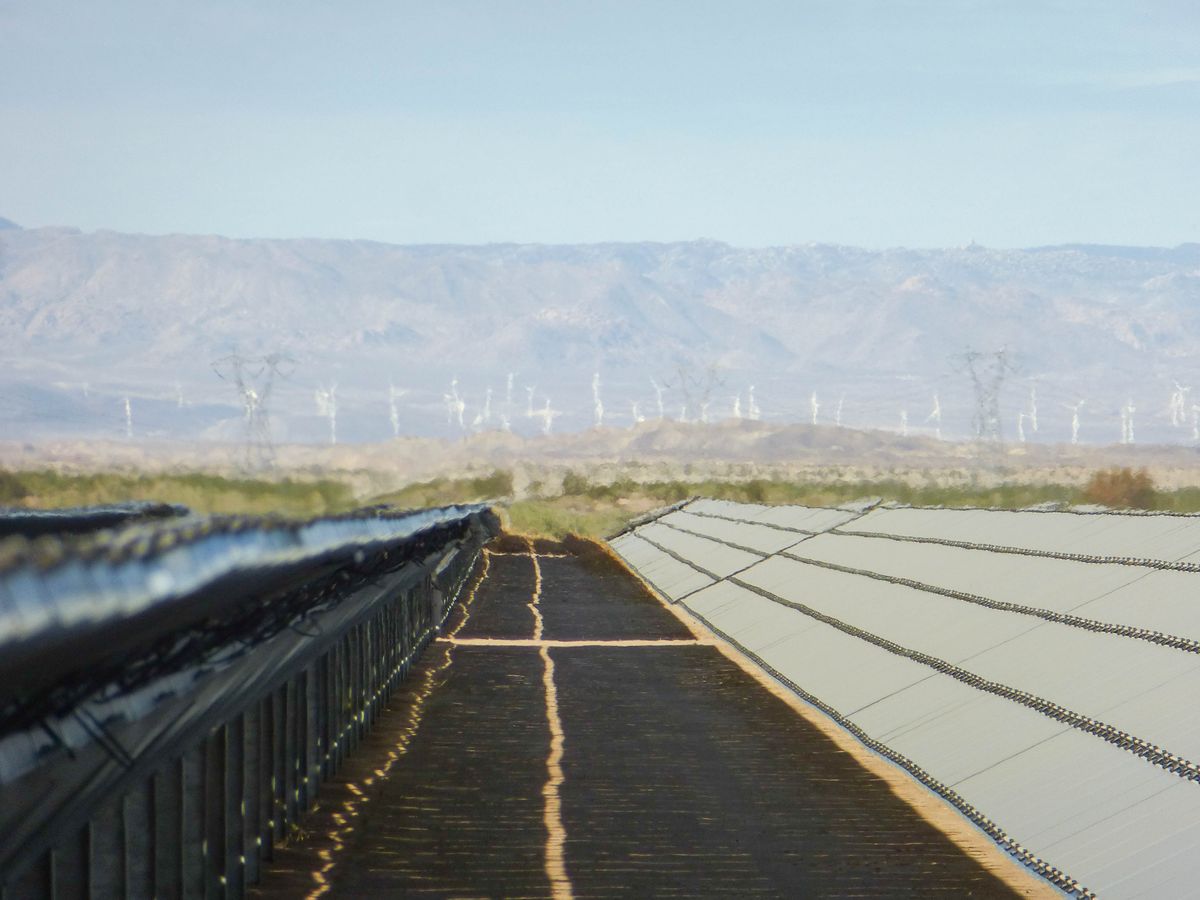Large wind and solar power farms have the economics to go toe-to-toe with the cheapest fossil fuel-based power supplies in the United States according to the venerable financial advisory firm Lazard Ltd. Thanks to falling costs and rising efficiency, reports Lazard in an analysis released this week, utility-scale installations of solar panels and wind turbines now produce power at a cost that's competitive with natural gas and coal-fired generating stations—even without subsidies.
The results appear in the eighth annual update of Lazard's Levelized Cost of Energy Analysis [pdf], which compares the combined cost of financing, building, and operating power generating plants using a variety of energy technologies. Lazard projects that new utility-scale solar plants will deliver energy at US $72-86 per megawatt-hour, and wind turbines beat that with a cost of $37-81/MWh.
Those renewable energy options compare well against the cost of the most cost-effective natural gas-fired technology—combined cycle plants—which delivers at a projected $61-127/MWh (depending on whether the plant captures its carbon dioxide emissions). The renewables look even better against coal in Lazard's analysis, which prices new coal-fired generation at $66-171/MWh.
The London-based Financial Times says the message is that renewables are starting to "outshine" gas. The FT quotes George Bilicic, Lazard global head of power, energy & infrastructure, accepting that renewable energy has finally arrived: “We used to say some day solar and wind power would be competitive with conventional generation. Well, now it is some day.”
Lazard is less keen on the present competitiveness of distributed renewables, such as rooftop photovoltaics. It estimates that rooftop PV delivers power at $180/MWh for homes and $126/MWh for businesses due to, for example, the higher cost of rooftop installation and higher transaction costs associated with smaller-scale projects.
However, sophisticated studies show a more nuanced picture. As IEEE Spectrum reported in March 2013, rooftop PV installations are already cost-effective in the U.S. without subsidies in areas with strong sunlight and higher-than-average local power prices. According to the solar parity mapping tool profiled in that article and created by the Minnesota-based Institute for Local Self Reliance, California should have enough of these solar parity niche zones to support the installation of 10,780 MW of residential rooftop PV and 13,910 MW of commercial rooftop PV in 2014.
That opportunity—if seized—also adds up to a considerable competitive challenge to conventional power plant technology.
Peter Fairley has been tracking energy technologies and their environmental implications globally for over two decades, charting engineering and policy innovations that could slash dependence on fossil fuels and the political forces fighting them. He has been a Contributing Editor with IEEE Spectrum since 2003.



